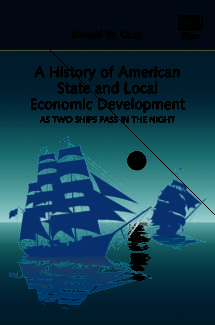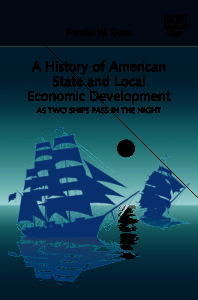
INTRODUCTION To the Chapter One Model
You have to start somewhere. It might as well be here.
Welcome
A conceptual framework is not everyone’s first love. For many it starts off with the most boring and unreadable theoretical blather with little possible use to anybody. And it’s even worse when you read it. For me, it is like reading the instruction manual. I don’t. My wife does that. Perhaps, just maybe, that is why I have over seventy years never successfully assembled anything, and my wife does it automatically.
OK cup of tea or not, it’s worth it to understand–and put order, organization and “meaning”–into reading the history. That’s why movies and TV shows always start with the cast of characters and an opening scene that provides some introductory background. That’s what Theme 1 tries to do. The actual history starts in Theme 2–and you can just start there if you are determined to avoid this section.
Still keep in mind this history “series” is not a prison. You, the reader, are free to pick and choose any module in any Theme in whatever order you see fit. Just wander through a Theme Introduction and click, or choose a sidebar and click. Nobody is forcing you to read this Theme or to read in sequence.
I offer only the obvious. The modules follow a sequence. One leads (hopefully) to the next. The modules that come early present the background and context, and definitions, which oftentimes are simply assumed in later modules.
If you don’t know what “the Contemporary Era” or “Early Republic Era”, Privatism or Progressivism are, or what MED is, or what External-MED is, I’m not sure what the point is in reading the module.
Each module is about 4,000 words, eight pages of text, around ten-twelve minutes to read. A module a day, or every couple of days, keeps the ED Curmudgeon away! There is plenty to read and the next scheduled Theme (3) will appear in the mid-Fall so there is no rush.
Add comments or email me with questions or concerns.
This online history of American State and Local Economic Development (S&L ED) is not a warmed-over version of my recent book, As Two Ships Passing In the Night. There are two more years of research, and this online version is less the reference book than a shorter, “narrative” for understanding and drawing meaning from our history and its heroines/heroes. Most importantly, this online history provides some level of connection (i.e. relevance) to the present-day, which (BTW) I refer to as the “Contemporary Era”.
The book, As Two Ships, spends considerably more time and effort on political culture, Privatism and Progressivism, and the municipal and state “policy systems” than this online history. It also provides a lot more depth on many other topics, not mentioned at all in the online history. Each module in the online history details a topic which is essential to understanding the time period, and frequently will select one state or city, or ED hero/heroine as a “personification” of the larger purpose. No doubt I could have chosen others–or discussed another topic entirely. This online history is introductory; it is not a complete and comprehensive history of American S&L ED. But whatever its faults, this online history is light years superior to anything related to the so-called “Three Waves of ED History” which has been the professional “default” during the last couple of decades.
In late April 2018 we launched the basic, stripped-down Chapter One Conceptual Framework. It includes two topics, (1) “Eras and Ages” of State and Local Economic Development, and (2) “What is this “Two Ships” Thing?”. Warning! There is more in the conceptual framework–lot’s more–but these two topics, Eras/Ages of American S&L ED and Privatism/Progressivism–Mainstream ED and Community Development–are required reading for understanding the forthcoming themes and modules.
The last Theme 1 module is a no-holds-barred precis of Chapter One Model in AS TWO SHIPS. It explains the main features of the entire framework. This is optional for the moment at least. This module is the academic version. It ain’t interesting, but it really provides a definition of terms that might be obscure when you read the history, and it shows you how these things fit together–at least in my mind. It also gives you clues as to what’s really important and how to derive some “meaning” or lessons, or take aways when you read future modules.
As time unfolds, I will add to Theme 1. The first later module will be the “Drivers of S&L ED” which is another very important element in the framework. I intend to add it after the reader has waded through the 19th century. We will also add the “ED Policy System” which is probably best-suited for academics wondering how all this relates to Clarence Stone’s “Regime Theory”. Those will come later.
Table of Theme 1 MODULES
Click on Desired Below Module
Theme 1: Module 2: Eras (and Ages) of American Economic Development AND the Early Republic Era (1789-1870)
Theme 1: Module 3: “Big City” Industrial Hegemonic Classical Era (1870-1975)
Theme 1: Module 4: Transition Era (1975-2000) AND Intro to Contemporary Era (post-2000)
Theme 1: Module 5: What is this TWO SHIPS Thing? Political Culture and American State/Local ED
Theme 1: Module 6: What is this TWO SHIPS Thing? Quo Vadis MED, CD, and Political Cultures
Theme 1: Module 7: What is this TWO SHIPS Thing? Mainstream Economic Development (MED)
Theme 1: Module 8: What is this TWO SHIPS Thing? Wings of Community Development (CD)
Theme 1: Module 9: Overview of the Five CD Wings
Forthcoming–Theme 1: Module 10: The Stripped-Down Chapter One Conceptual Framework




